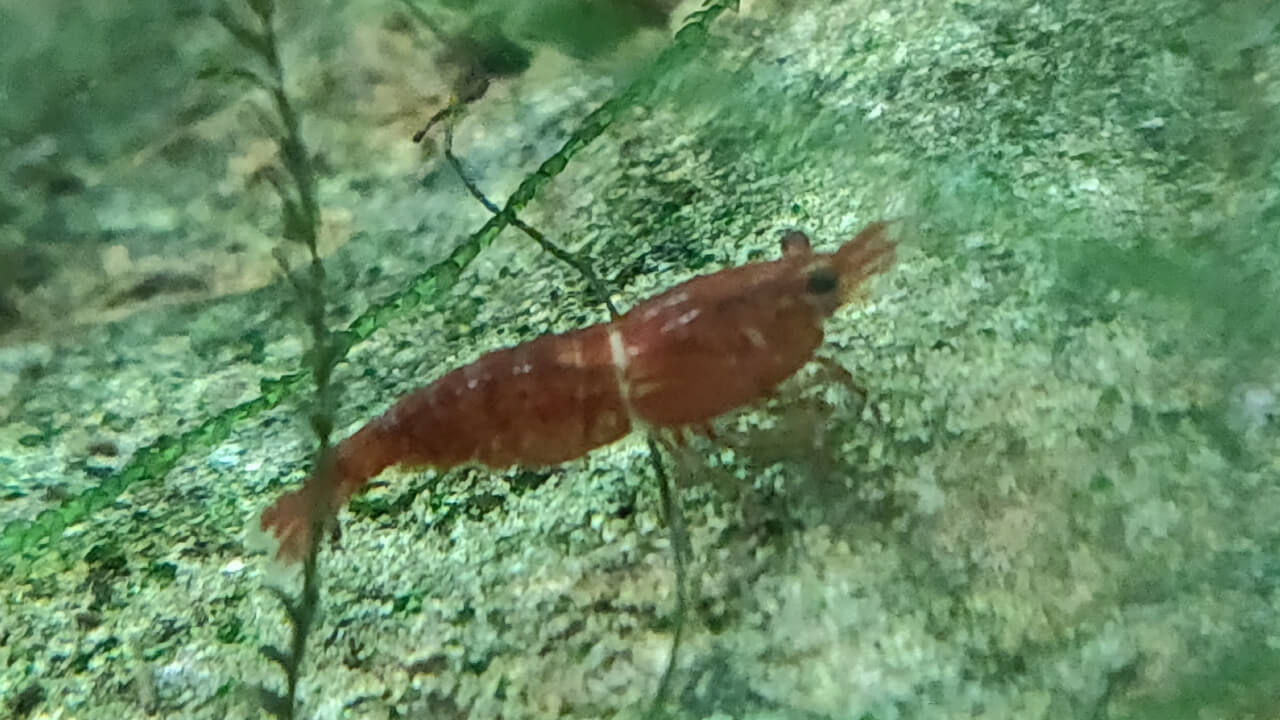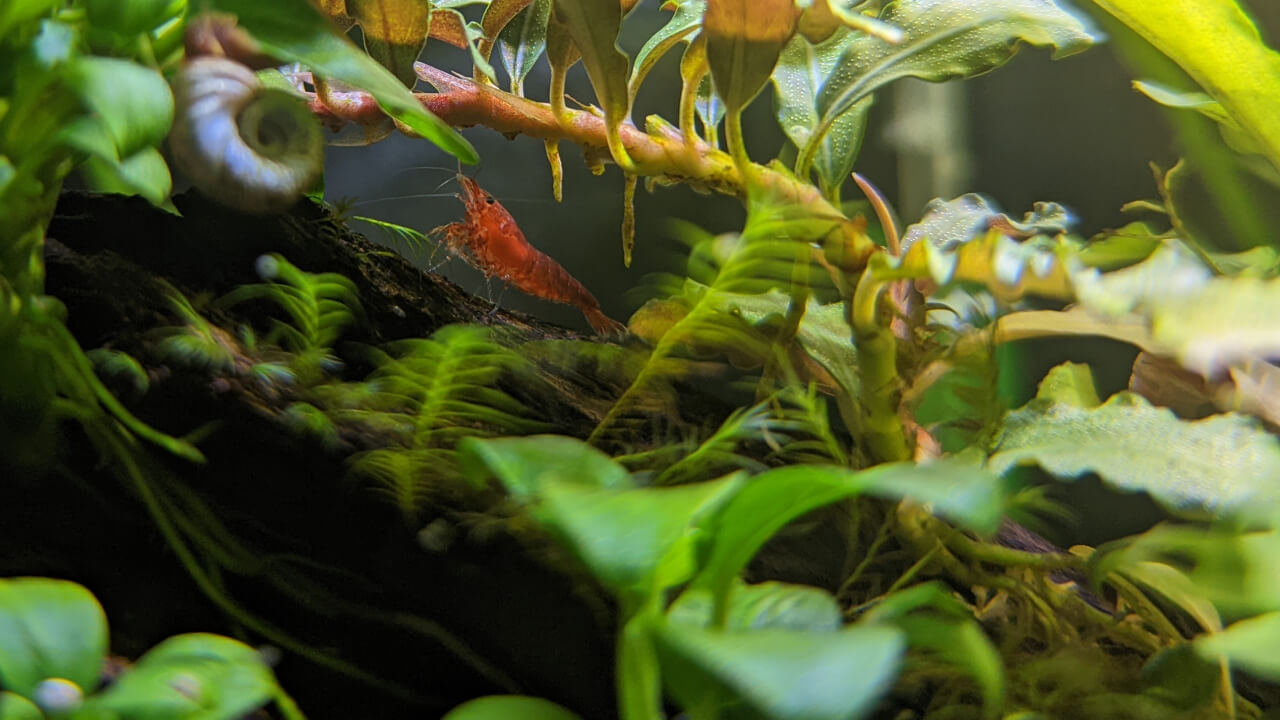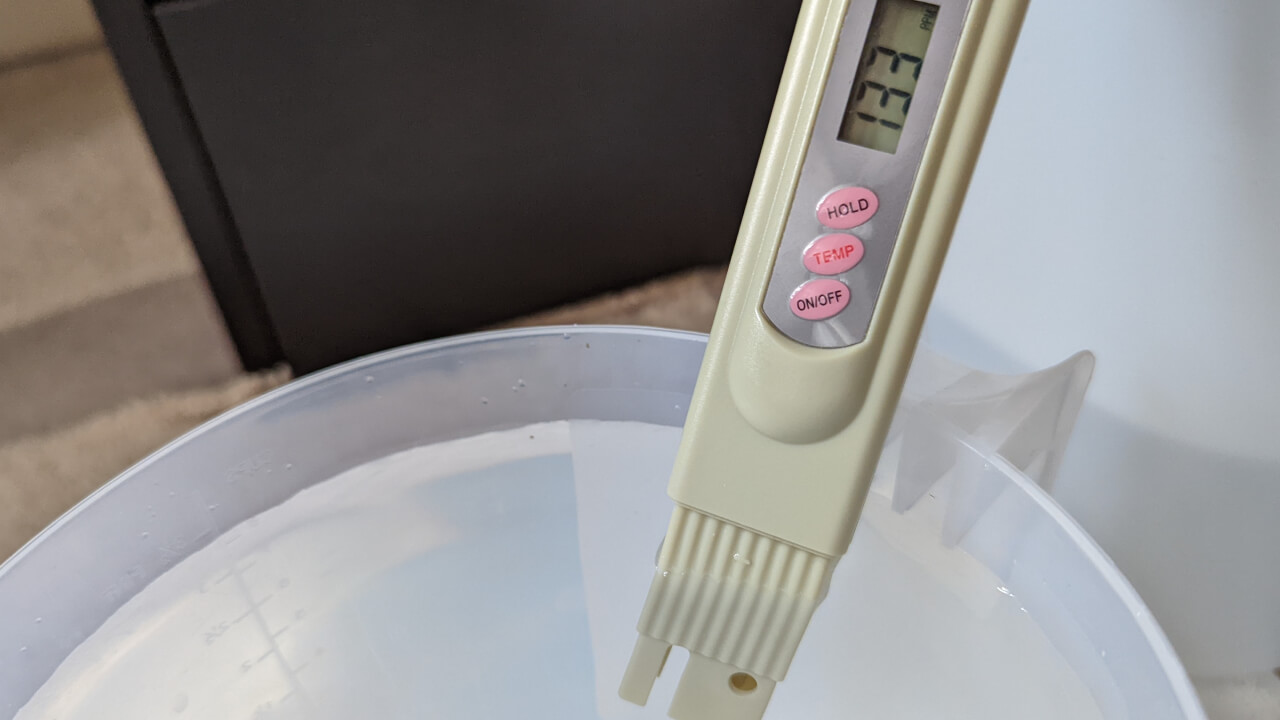The Total Dissolved Solids (TDS) tells you how many things have dissolved in the water.
Sometimes water with a high TDS level is called “hard”, but don’t confuse it with General Hardness (GH). They’re very different.
The TDS simply tells you how much has dissolved, but gives you no information about what’s been dissolved.
Why should you measure TDS?
Measuring the TDS is really easy with a cheap TDS pen. It takes less than 5 seconds to do.
It works great at giving a rough idea of how stable your water parameters are. If you notice it climbing up, for example, you should find out what’s dissolving in your tank.
When mixing your own remineralized water, the TDS immediately tells you if you’re near the hardness you’re after.
You don’t need to spend minutes testing the GH and KH with each spoonful of salt. Just get to roughly the right TDS and check the parameters at the end.
You shouldn’t only test for your TDS, though - it’s not very useful on its own.
Check your core water parameters too
The general hardness (GH) and carbonate hardness (KH) levels are so much more important than TDS.
Bee shrimp need water with a GH between 4 and 6 dGH (degrees of GH).
1 dGH is equal to 17.8 ppm.
6 dGH = (6 X 17.8 ppm) = ~107 ppm
Does that mean that water with a TDS of 107 ppm is perfect for them? No.
It could be that all 107 ppm is from calcium bicarbonates, which only increase the KH. The water could have 0 GH and 6 KH instead.
Using that water would definitely cause failed molts.

This is why it’s so important to measure your core parameters properly. You need the right minerals and the right amount.
Measuring tap water TDS isn’t helpful
Shrimp tanks need the right minerals in the water for a healthy colony.
Tap water all over the world will vary in GH and KH, there’s no standard. There might also be lots of chemicals dissolved in it to make it safe to drink, but dangerous for shrimp.
The TDS of tap water can also fluctuate quite a lot. My tap water’s TDS can change by about 15% in a day.
Without knowing what exactly has been added/removed, it’s impossible to tell if the water is still safe to use by only measuring the TDS.
Why is my TDS increasing?
Your TDS will increase when anything dissolves into the water.
- Topping off with normal water
- Adding dechlorinator / detoxifier
- Dosing a fertilizer
- Excess food breaking down
- Decaying plants
- Shrimp waste
- Tannins
- Minerals from rocks
Top-off TDS creep
When water evaporates from your aquarium, the minerals and salts get left behind. This causes the remaining water to get harder, and its TDS rises.
If you top-off the tank with more tank water, you’ll be adding even more minerals and cause the TDS to creep up.
You should use reverse osmosis or distilled water for top-offs to prevent this.
The pure water gets the water level back up, and dilutes the hardness back to its original level, too.
Adding chemicals to the water
You’ll see a fairly big jump in TDS when you add a dechlorinator or detoxifier into your tap water. Your TDS reading will fluctuate for a few minutes, so it’s a good idea to wait before you measure it.
Dosing a fertilizer into your planted tank will also increase the TDS. Their sole purpose is to add extra nutrients and minerals into the water for plants to absorb.
With these two examples, you can see that not all TDS increases are bad.

Natural decay
As old leaves and plants break down, they’ll release tiny amounts of ammonia. The beneficial bacteria in your filter breaks this down into other safer elements, like nitrate.
This works like adding a fertilizer, but obviously has a much weaker effect.
As long as your nitrates are still in a safe range, between 0 and 20 ppm, this is nothing to worry about.
Tannins
Adding tannins into your water creates tannic acid, making your tank into blackwater.
You’ll get tannins from botanicals like alder cones, or leaf litter like Indian Almond leaves.
These tannins can provide quite a few benefits, so the extra TDS is not a problem.
Minerals and salts
Some types of hardscape rocks can slowly dissolve and raise the carbonate hardness.
Seiryu stone is made up of carbonated limestone, and will increase your KH over time.
You should keep an eye on the two hardness levels to prevent failed molts:
- General Hardness (GH)
- Carbonate Hardness (KH)
Do you need to raise your TDS?
No, it’s not a useful measurement on its own. There is no ideal TDS for shrimp.
Always measure the core parameters instead, and keep them in a safe range.
- General Hardness
- Carbonate Hardness
- Ammonia
- Nitrite
- Nitrate
If anything, try to get your TDS as low as possible, with all other parameters correct.
Having any unnecessary elements in the water could cause health problems for your shrimp, or cause them stress.
How to reduce your TDS
There are a few simple ways to lower your TDS.
- Water changes
- Activated charcoal in the filter
Do a water change
By doing a water change with water that’s got a lower TDS value, you’ll gradually get your tank’s TDS down.
You don’t need to rush this, shrimp thrive in stable parameters.
Replacing 20% of the water every week should get you there soon enough.
Use activated charcoal
Activated charcoal is amazing at pulling things out of the water and trapping them.
The charcoal won’t be able to trap everything, but it should make a noticeable difference in your TDS.
Depending on what exactly is dissolved in your water, you might need to replace your carbon fairly often.
Conclusion
Measuring your shrimp tank’s TDS can give you a basic idea of how stable the water parameters are.
You should still check your core parameters and hardness levels are correct, instead of just relying on the TDS level.
The TDS measurement is much more useful and accurate with remineralized water. It’s not very helpful with tap water as it can change quite a lot.

